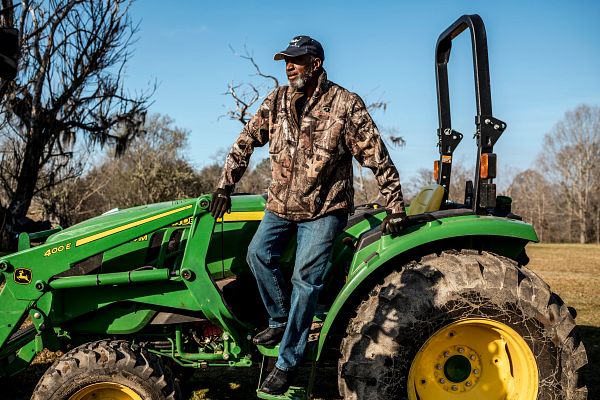Using farm and ranch equipment is not a luxury in today’s agricultural environment; rather, it is a necessity. From small-scale family-owned operations to large commercial enterprises, landowners increasingly rely on machinery and technology to sustain and improve productivity, efficiency, and profitability. Whether managing vast acres of crops or overseeing livestock, having the right equipment can significantly transform the daily operations of any farm or ranch.
This article explains the main benefits of farm and ranch equipment for landowners and how making the appropriate tool investments may pay off in the long run.
Enhanced Efficiency And Time Savings
One of the most significant benefits of using farm and ranch equipment for sale is the drastic improvement in efficiency. Manual labor, while still valuable in many aspects, cannot compete with the speed and consistency of machines. Tractors, seeders, harvesters, and automated feeders can complete tasks in hours that would take days by hand. This allows landowners to cover more ground in less time and meet critical seasonal deadlines without overwhelming labor demands.
For instance, planting and harvesting windows are often tight, especially when weather conditions are unpredictable. With equipment handling large-scale tasks quickly and reliably, landowners can take advantage of optimal conditions, reducing crop losses and increasing overall output.
Reduced Labor Dependency
The agriculture industry has long faced challenges related to labor shortages, especially during peak planting and harvest seasons. Modern farm and ranch equipment helps alleviate these issues by minimizing the need for large labor teams. A single person operating a tractor or baler can often replace several workers performing the same task manually.
This not only reduces hiring and training costs but also lessens the risks associated with human fatigue and error. For landowners, this means smoother operations, fewer delays, and better control over scheduling. In the long run, reduced dependency on manual labor translates into lower overheads and more predictable operating costs.
Improved Precision And Productivity
Farm and ranch equipment has evolved beyond basic mechanical functions to incorporate smart technologies such as GPS guidance, data analytics, and automation. These advancements allow for precision agriculture, where tasks like seeding, fertilizing, and irrigation can be tailored to the specific needs of the land, rather than applied uniformly.
This level of precision minimizes waste and optimizes the use of resources, resulting in better crop yields and healthier livestock. Landowners benefit from having more control over input costs and can make informed decisions backed by real-time data. Whether it’s adjusting feed rations for cattle or applying targeted pest control, equipment-supported precision boosts productivity without compromising sustainability.
Enhanced Land And Animal Management
For ranchers, equipment like cattle chutes, feeders, waterers, and fencing tools are essential for managing livestock effectively. These tools contribute to better animal health and welfare by ensuring consistent feeding schedules, reducing stress during handling, and improving shelter and containment systems.
Similarly, for landowners managing crops, equipment helps maintain soil health through reduced compaction, efficient tilling, and better weed control. This results in long-term land sustainability and higher return on investment. Equipment also assists in maintaining infrastructure, such as clearing brush, repairing roads, and maintaining irrigation systems — all of which are vital for a fully functional farm or ranch.
Financial Gains And Long-Term ROI
While the upfront cost of farm and ranch equipment can be significant, the long-term financial benefits far outweigh the initial investment. Increased productivity, reduced labor costs, and higher yields contribute directly to profitability. Many landowners also take advantage of financing options, tax incentives, and equipment-sharing models to make ownership more affordable.
Furthermore, high-quality machinery tends to have a long service life and strong resale value, especially when properly maintained. By investing in reliable equipment, landowners set themselves up for consistent operational performance and greater economic stability over time.
Adaptability And Scalability
As agricultural operations grow or change focus, modern farm and ranch equipment offers the flexibility to scale alongside them. Modular tools, attachable implements, and multi-purpose machines can adapt to various farming and ranching needs, whether the goal is to diversify crops, increase livestock numbers, or expand acreage.
This adaptability allows landowners to stay competitive in an evolving market, experiment with new techniques, and respond swiftly to changes in demand or environmental conditions. Instead of being tied to rigid processes, equipment empowers landowners to innovate and grow without sacrificing efficiency.
Conclusion
Farm and ranch equipment is more than just a convenience — it is a cornerstone of modern agricultural success. For landowners, the advantages are clear: improved efficiency, reduced labor needs, increased precision, better land and animal management, long-term financial benefits, and the flexibility to grow and adapt. Purchasing the appropriate equipment will become even more crucial as technology develops. By embracing these tools, landowners can build more resilient, profitable, and sustainable operations that thrive in today’s competitive agricultural environment.




